Additional notes/worksheet - First Class Login
Additional notes/worksheet - First Class Login
Additional notes/worksheet - First Class Login
- No tags were found...
Create successful ePaper yourself
Turn your PDF publications into a flip-book with our unique Google optimized e-Paper software.
- In the other colonies, the Irish often faced discrimination if they tried toget employment in English-owned businesses.The Peoples of British North America – People of French Hertiage (pgs.84-85)1. There were people of French heritage in all the colonies and territories, butthe two main groups were the _________________________________and the_____________________________________________________.2. There was a small elite, but most of the population were___________________ - farmers who lived in rural areas.3. ______________________ was the name for one of the first permanentFrench settlements in ______________________________.4. It included the areas that became __________________________,____________________________, and ___________________________.Acadians are the ______________________ of these first settlers.5. In the 1600’s and early 1700’s, Acadians had strong communities basedon _____________________ and __________________. During theyears of war between France and England, the area where Acadians livedchanged hands a few times, until it finally came under_______________________.
The Peoples of British North America – Aboriginal Peoples- many settlers and members of the government had racist ideas about <strong>First</strong>Nations, Inuit and Metis. Racism is a prejudice based on a person’sheritage or skin colour. These attitudes resulted in discrimination in manysituations.- in Canada West and the Maritime colonies, the arrival of the Loyalists andthe British and Irish settlers created a great demand for land. In CanadaWest, the colonial government made arrangements to take over more <strong>First</strong>Nations lands. Sometimes this happened through treaties, and sometimesthe government bought the land.- In Nova Scotia, PEI and New Brunswick, the colonial governmentsgenerally allowed settlers to take whatever land they wanted. When <strong>First</strong>Nations leaders complained, the governments set aside certain lands onlyfor <strong>First</strong> Nations use.- Eventually, <strong>First</strong> Nations communities were left with only small areas ofpoor-quality land. By the mid-1800’s, most people lived with poverty,and many communities faced starvation.- The population of <strong>First</strong> Nations and Inuit dropped from approximately500,000 before Contact to approximately 102,000 by 1871. This greatdrop in population was mostly the result of disease. Because so manypeople were living with poverty and not getting enough to eat, theybecame weak and got sick easily.- <strong>First</strong> Nations and Inuit had no resistance to deadly European diseases suchas smallpox, tuberculosis and measles. When a disease had been in acommunity for many generations, people’s bodies became better able tofight it. European diseases were new to <strong>First</strong> Nations and Inuitcommunities. Thousands of people died after coming in contact withEuropeans and European goods. Sometimes whole communities werewiped out.- By the mid-1800’s, the largest Metis community in BNA was in the RedRiver Settlement, at the south end of Lake Winnipeg in Rupert’s Land.The Metis honoured the French or English and <strong>First</strong> Nations cultures oftheir heritage.- The Red River Settlement was in the region under the control of theHudson’s Bay Company, and most Metis living there were employed inthe fur trade in some way. They did the hard labour of transporting goodsby canoe, by wagon, or on foot. They also supplied food to the fur traders,including vegetables from their gardens and buffalo meat. Because of
acist attitudes, there was not much chance that Metis workers would bepromoted to the easier and better-paying jobs in the fur trade.The Peoples of British North America – Black Colonists- slavery was legal in BNA until 1834, but many Black colonists were“free.” After 1800, slavery became less and less common. Many Blackpeople chose to immigrate to BNA because they believed they had a betterchance of not being enslaved. Some Black people were sent from Jamaicain 1796, but most of the immigrants came from the United States.- at the time of the American Revolution, approximately 3000 BlackLoyalists came to BNA. They settled mostly in the colonies of NovaScotia and New Brunswick. They did not get the same benefits as theother Loyalists, however. The pieces of land given to the Black Loyalistwere not as large, and they had a hard time getting official title – a legalrecord that the land was theirs. This meant that they could be forced tomove.- There was another big wave of Black immigration when slavery wasoutlawed in BNA. Between 1840 and 1860, approximately 30,000 Blackmen, women and children came to BNA to escape slavery in the UnitedStates. They settled in all parts of BNA, but mostly joined the Blackcommunities already existing in Canada West (now Ontario) and NovaScotia.- Although the Black colonies in BNA in the mid-1800’s were not enslaved,they had none of the same opportunities as White colonists. Theyexperienced discrimination in all parts of their lives and could get only thelowest paying work and the poorest land to live on.Daily Life in BNAHomes- no matter how wealthy you were, there were certain things that would besimilar in all homes, urban or rural. Light would come from candles or oillamps, and heat would come from a fireplace or wood stove. There wasno indoor plumbing, so homes would have an “outhouse” toilet a littleway from the main house. Water had to be drawn by hand from a well, anearby spring, or streams or lakes. In fancier homes, there would be ahand pump in the kitchen. If you wanted hot water, you had to heat itover the fire.
Transportation- one of the biggest challenges for people living in BNA was the difficultyof transportation at the time. There were some very rough roads in thecolonies, but in other areas of BNA people still traveled mostly by river,so any settlements were also along rivers.- travel on land was by foot, horse, or oxen.- The first public railway opened in 1836 in Canada East, but it would bemany years until there was a useful railway system.Health Care- few families expected all their children to grow into adults because therewere so many serious childhood diseases, such as measles, scarlet fever,and whooping cough.- people did not understand the importance of such things as clean drinkingwater in controlling the spread of certain diseases. An outbreak of adisease that spreads very quickly in an area is called an epidemic.Epidemics were quite common in towns and cities.- For most people, healthcare was provided at home by family members.Many people used traditional medicines, such as herbs or roots, that theyprepared themselves. Aboriginal people understood the medicinal valueof a number of wild plants such as flagroot used for colds. They sharedthis knowledge with the settlers.- People living in rural areas were not ever likely to have the chance to see adoctor. Medical care was therefore quite simple. For example, there wereno antibiotics to cure infections or even Aspirin for pain. This meant thatwhat would be a simple accident today, such as a broken arm, could easilyturn deadly.- Tonics were widely available at this time in BNA. These tonics claimedto cure almost any kind of illness. These tonics were just flavoured wateror alcohol. They were usually bought in stores or from sellers whotraveled around the countryside.
Education- learning a trade or working on the family farm was seen as the best waytoget ahead in the world. For many families, going to school was notconsidered very important. However a lot of European settlers could readand write. They were taught at home by family members. Books were ahighly prized possession, and reading – silently or aloud – was a favouritepastime.- in the early years of the colonies, almost all schools were run by religiousorganizations, often with the help of the parents in the community. Manypeople thought that proper behaviour and religious instruction were themost important things that students should learn in school. So childrenwould go to different schools depending on their religion.- As time went by, publicly funded schools were set up. These wereschools partly paid for with tax money. They were supposed to be open toall children. In fact, they were mostly for White children. The languageof instruction was French or English, depending on the majority of thegroup.- Church groups also ran schools in <strong>First</strong> Nations and Inuit communities.The main goal of these schools was to teach the children about Europeanculture and religion.Pastimes- people enjoyed playing or watching outdoor sports, doing crafts such asneedlework or carving, making music with friends, reading or storytelling,and playing games. Some pastimes were part of people’s traditions. Forexample, snowsnake was a popular game with many <strong>First</strong> Nations boysand men. The object of the game was to see how far you could slide alarge stick along the snow. Scottish settlers found the long Canadianwinters ideal for playing their favourite sport, curling.- in rural communities, colonists often had “work bees” where everyonemade a party of getting together to get something done, such a building abarn or making quilts.


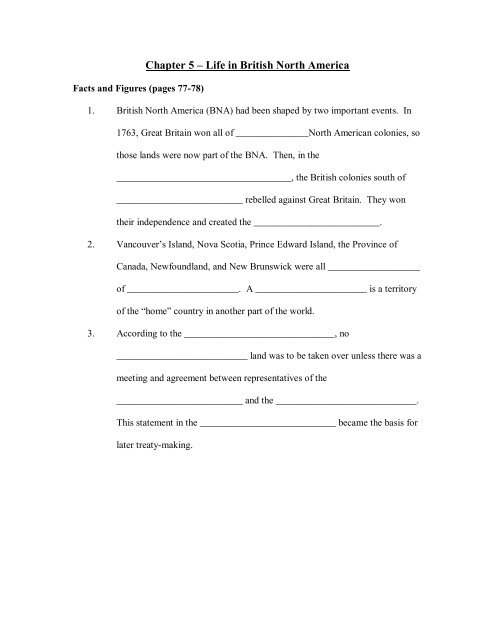


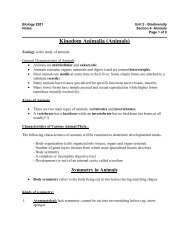
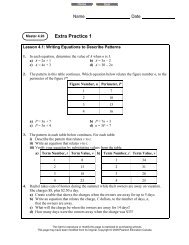
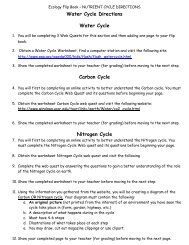
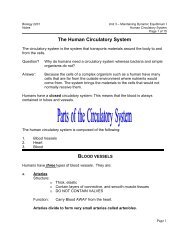

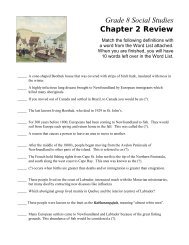


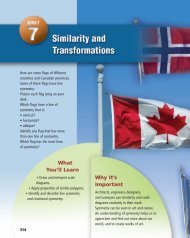
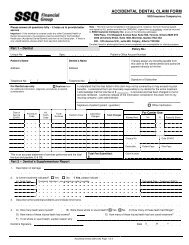

![Living Healthy Newsletter [Winter 2011]:Layout 1.qxd - Eastern Health](https://img.yumpu.com/35820360/1/190x245/living-healthy-newsletter-winter-2011layout-1qxd-eastern-health.jpg?quality=85)